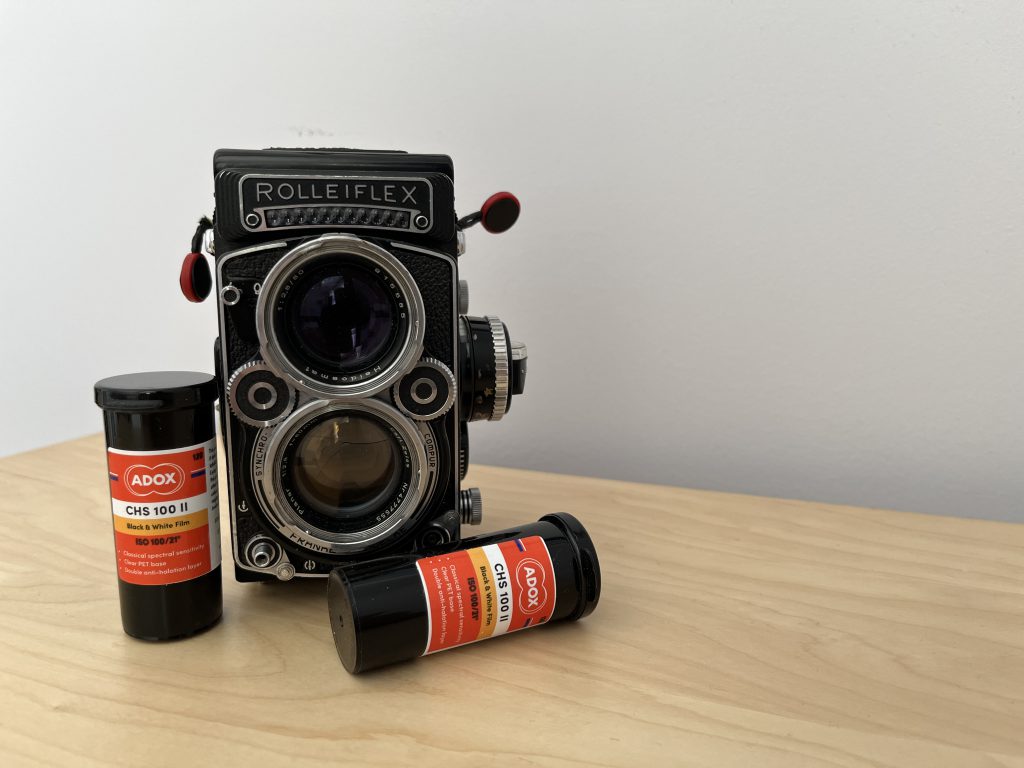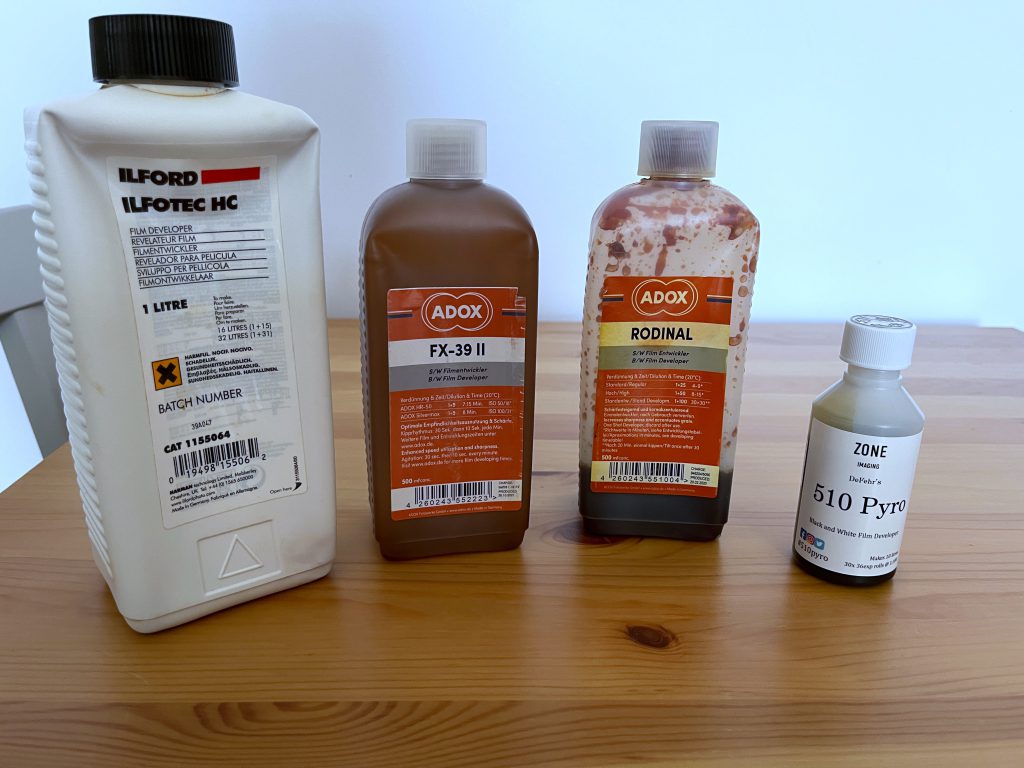While every type of review I write comes with unique problems, nothing is more challenging than writing a film review. Film reviews have been done for years, mostly in dusty photographic journals and magazines and reviewed under exact conditions and in large quantities. If I tried to follow these methods, it would take me years to complete and require a large volume of films, cameras, lenses, and equipment I need more room for. Like all my reviews, I set out my method to work within the realms of what I wanted these reviews to cover: the basics. I’ve aimed these at beginner and intermediate photographers starting and continuing their journeys into film photography. I might want to break out of their regular film stocks and try something new. They need some form of baseline to work from. I fully admit that these are not scientific and don’t cover every aspect of a single film stock. So, in today’s post, I’m going to break down how I work on a film review by going through the process I went through to create a video review of Adox CHS 100 II, a film I have already reviewed in writing but decided it was worth giving it a video review.

Cameras, lenses, filters all affect how film is rendered so picking the gear has been one of the biggest challenges and most flexible when creating these reviews. A good review would have multiple cameras, lenses, rolls of film through each developer. Not exactly good for someone like me who is limited in time also the cost and time allowance would probably take a year to do a completely in-depth review of a single film stock. When I first started reviewing films I would pick a different camera and lens for each roll, at least until a reader commented that it would be better to be consistent in the camera choice. While a little boring, it did make a lot of sense. But then it came to picking the right cameras for each film, but honestly I went with my gut. I went with a single lens for a year, but then decided to use different lenses for each roll to give myself some creative freedom to pick the right focal length for where I was shooting the film. And that’s another weird thing is that I also would expose the film under often wildly different conditions, or constant ones depending on the time of year.

When reviewing a film stock there are often far more variables that can effect the final image than most people think. While the developer has the greatest influence on the final look of the film but so does the camera, the lens, and the exposure index. A proper magazine could get as many developers to run almost every possible combination. As a small operation, I settled on four rolls per review, a nice neat number that offers a chance to go with the standards and add something more exotic. Also, four rolls of film, shot, developed, scanned, posted and written about, are easy to do in a month or spread out if needed. I also make the point to shoot the film as close to the listed box speed as possible; while this may not be the ideal box speed, the average photographer may not have tweaked their process yet. I’ll only shoot differently when it is asked of by the developer chosen (Diafine, for example). The three standard developers I will always run are, in the top spot, a Hydroquinone-Metol-based developer, Kodak D-76, Ilford ID-11 or any number of clone developers. This gives the film the best ‘baseline’ results and a chance to shine. Therefore, I will usually not filter the roll developed by an MQ developer. It is even more critical because if it is a film I haven’t shot before, I don’t have a personal baseline to show what the film can look like under normal conditions. In some cases, no stock times are available, so I will usually go with a 1+1 dilution. The second roll is run through an HC-style developer, Kodak HC-110, Ilfotec HC, or one of the many clones. Here, I’ll play around with dilutions, primarily based on what I saw with the D-76 roll. I’ll either go with a 1+31 dilution, or if the roll could perform better with a more dilute developer, I’ll jump straight to 1+63. The drastic change is because it is easy to calculate the 1+63 times from a 1+31 time. I’ll also start to add in a filter, usually a pale yellow (8 or 12), especially if I’m working with a more dilute mix. Another option that HC developers give is a semi-stand method if I cannot guess or find a time for this developer class. Next up is Rodinal, another classic high-acutance developer; things can get weird now. There have only been a few reviews where I’ve avoided using Rodinal, mainly because the results have yielded heavy visible grain that could be mushy. I have a couple of options: I’ll run out another high-acutance developer with some fine-grain capacity or go with a semi-stand development. And that’s the joys of Rodinal; most of the time, I’ll use the standard dilutions of 1+25 and 1+50 or go with a 1+100 and semi-stand if there are no Rodinal times listed for the film. And finally, we get to the fun one, the special developer. Here, I’ll go with something exotic that lets me try out a new favourite non-standard developer. This can be one of Adox’s historical developers, Atomal 49 or FX-39 II, a specialty developer like Diafine or 510-Pyro, or even a TMax developer who can appear. Usually, this helps get the film to the best place in my eyes, and it is based on what I’ve seen with the three previous developers. Now, the one thing that I have run into before is what’s called closed or semi-closed systems. I’ve run afoul of these before, mainly with Adox CMS 20 II, where the film performs best with a dedicated developer; after that debacle, I made a point when I ran into one of these systems to put the dedicated developer into the number one spot. And if I could not get my hands on that developer because of availability or cost (Agfa Copex Rapid), I would put in that disclaimer. I touched on this earlier, but finding time is one of the challenges in getting these reviews together. Most of the time, I can see times for all the developers, at least the first three. In those cases, I’ll use the semi-stand method when the ones are unavailable or when I need more information to make an educated calculation. This is more important for that fourth roll, and when that happens, I’ll only run with three rolls of film for that review.




Writing reviews of film stocks is about as maddening as writing lens reviews as there is limited vocabulary to describe these images. And these days, a lot of what the image looks like on the screen depends on how they are digitised and post-processed. Now in my case, I try to be as consistent as possible with my scanning process, it’s not perfect by far, but I have fine-tuned my workflow. Today I work mostly with my Epson V700 and using Silverfast 9 SE and Adobe Photoshop CC for the scanning process. I tend to stick with a light hand once the negatives are scanned at 2400 DPI and saved as a TIF file. From there I adjust both levels and curves with a bit of dust/scratch clean up and a light sharpening pass. I feel that by using a lighter touch with my post-processing I can get close to what the film would look like when printed in a traditional manner. From there it is trying to figure out the words to use and in many cases, yes I do sound cliche. It’s far from a perfect process, but I do see the differences between the different developers. One of the best parts about writing these reviews is that I can quickly adapt as I go along if I have spread out shooting and developing process. And then there is colour which is a whole other ball game. While you can adjust the black & white films, colour I do tend to stick to lab processing or the standard development method. Colour I tend to write about colour rendition, image quality, and specifically about the scanning process. I do include the scanning process in the final paragraph of my B&W reviews as it is fairly universal across the board. I also make sure to include any difficulties with cupping and curling as it is part of reviewing these films in a modern context.




Writing these reviews is a lot of fun and also challenging. It all comes down to the weather; I usually give myself a lot of lead time to get things done right and to account for the weather. To prove the point, I had to move my review of the FPP B&W Infrared film forward a month because even though we did get a lot of good weather, there were times when I didn’t have the time to take advantage of said weather. On the days I did have the time, the weather did not cooperate. Thankfully, I had a completed review already and could easily swap them around. What has helped these reviews is moving to a one-review-per-month model. These reviews are not scientific; like all my reviews, I approach them from a practical point of view. The one thing I have expanded the written reviews is video reviews. These are usually done later, and I had a lot more time to try different developers and refine development techniques, exposure index, and formats. The one problem with these reviews is that there is a finite number of films, unlike cameras and lenses. So what will I do when I hit that hard stop? Well, go back and revisit some of my past favourites, get a more extended form review, and figure out an ideal spot for the EI, Developing, and how far I can take the film stock.